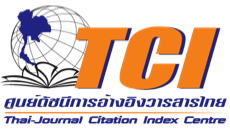การพัฒนาความสามารถในการอ่านและการเขียนสะกดคำของนักเรียน ชั้นประถมศึกษาปีที่ 1 โดยการจัดการเรียนรู้แบบ PWIM ร่วมกับแผนผังความคิด (The Development of Reading and Writing Word Spelling Abilities of The First Grade Students Taught by Learning PWIM and Mind Mapping)
คำสำคัญ:
การอ่านสะกดคำ การเขียนสะกดคำ, การจัดการเรียนรู้แบบ PWIM (Picture Word Inductive Model), แผนผังความคิด (Mind Mapping)บทคัดย่อ
การวิจัยในครั้งนี้มีจุดประสงค์การวิจัย 1)เปรียบเทียบความสามารถการอ่านสะกดคำของนักเรียนชั้นประถมศึกษาปีที่ 1 ก่อนและหลังการจัดการเรียนรู้แบบ PWIM ร่วมกับแผนผังความคิด 2)เปรียบเทียบความสามารถการเขียนสะกดคำของนักเรียนชั้นประถมศึกษาปีที่ 1 ก่อนและหลังการจัดการเรียนรู้แบบ PWIM ร่วมกับแผนผังความคิด และ 3)ศึกษาความคิดเห็นของนักเรียนชั้นประถมศึกษาปีที่ 1 ที่มีต่อจัดการเรียนรู้แบบ PWIM ร่วมกับแผนผังความคิด กลุ่มตัวอย่าง คือ นักเรียนชั้นประถมศึกษาปีที่ 1/2 จำนวน 22 คน โรงเรียนวัดเทพประสิทธิ์คณาวาส เครื่องมือที่ใช้ประกอบด้วย 1) แผนการจัดเรียนรู้โดยวิธีการสอน PWIM ร่วมกับแผนผังความคิด 2)แบบประเมินความสามารถการอ่านสะกดคำ 3)แบบประเมินความสามารถการเขียนสะกดคำ และ 4)แบบสอบถามความคิดเห็นของนักเรียนชั้นประถมศึกษาปีที่ 1 ที่มีต่อการจัดการเรียนรู้แบบPWIM ร่วมกับแผนผังความคิด สถิติทีใช้ในการวิเคราะห์ข้อมูล คือ ค่าเฉลี่ย () ส่วนเบี่ยงเบนมาตรฐาน (S.D.) และค่าทดสอบทีแบบไม่เป็นอิสระ (T-Test Dependent Sample)
ผลการวิจัย พบว่า 1)ผลการประเมินความสามารถการอ่านสะกดคำของนักเรียนชั้นประถมศึกษาปีที่ 1 โดยใช้แผนการจัดการเรียนรู้แบบ PWIM ร่วมกับแผนผังความคิดหลังเรียนสูงกว่าก่อนเรียนอย่างมีนัยสำคัญทางสถิติที่ระดับ .05 2) ผลการประเมินความสามารถการเขียนสะกดคำของนักเรียนชั้นประถมศึกษาปีที่ 1 โดยใช้แผนการจัดการเรียนรู้แบบ PWIM ร่วมกับแผนผังความคิดหลังเรียนสูงกว่าก่อนเรียนอย่างมีนัยสำคัญทางสถิติที่ระดับ .05 และ 3) ความคิดเห็นของนักเรียนชั้นประถมศึกษาปีที่ 1 ที่มีต่อการจัดการเรียนรู้แบบ PWIM ร่วมกับแผนผังความคิดโดยภาพรวมอยู่ในระดับมาก
เอกสารอ้างอิง
[Online]. Retrieved August 10, 2017, from https://books.google.co.th/books?id=OW
_4AAAAQBAJ&dq=PWIM&hl=th&source=gbs_navlinks_s.
Calhoun, E. (2017). Teaching Beginning Reading and Writing with the Picture
Word Inductive Model. [Online]. Retrieved August 10, 2017, from
https://books.google.co.th/books?id=mHBC95WB7TIC&dq=PWIM&hl=th&source=gbs_navlinks_s.
Ferlazzo, L. & Sypnieski, K. (2017). The ESL / ELL Teacher's Survival Guide. [Online].
Retrieved August 10, 2017, from https://books.google.co.th/books?id=rf1ed0e
ZaoUC&dq=PWIM&hl=th&source=gbs_navlinks_s.
Ministry of Education. (2008). The Basic Education Core Curriculum B.E.2551(A.D.2008).
Bangkok: The agricultural Cooperative Federation of Thailand. Ltd. (in Thai)
Musiksan, A. (2016). The basic Thai language. Bangkok: SE-EDUCATION Public Co, Ltd.
(in Thai)
Panoi, S. et al. (2010). Teaching Thai language can be read and written by spelling
words. Nonthaburi: C.C.knowledge Links Co, Ltd. (in Thai)
Pinprachasan, A. (2014). Strategies for teaching the Thai language to have fun. Bangkok:
Ink on Paper Co, Ltd. (in Thai)
Somprayun, W. (2010). Techniques for teaching Thai language. Bangkok: Dokyawichakan
Publishing Co. (in Thai)
Sirithanagiphan, S. (2016). The result of learning management using Mind Map for
thinking skills of Prathom 1 students at Demonstration School , Suansunandha
Rajabhat University. [Online]. Retrieved October 10, 2017, from https://elsd.ssru.ac.th/sutana_si/mod/data/view.php?d=1&mode=single&essentialces
sentialcolours=alternative2. (in Thai)
Suphan, W. (2011). The result of reading and writing word spelling abilities of the first
grade students by using mind mapping. Master of Education Thesis Program in
curriculum and instruction Education Graduate School Mahasarakham University.
(in Thai)
Thai Language Institute. (2016). Teaching and learning manual by spelling words.
Bangkok: The agricultural Cooperative Federation of Thailand. Ltd. (in Thai)





